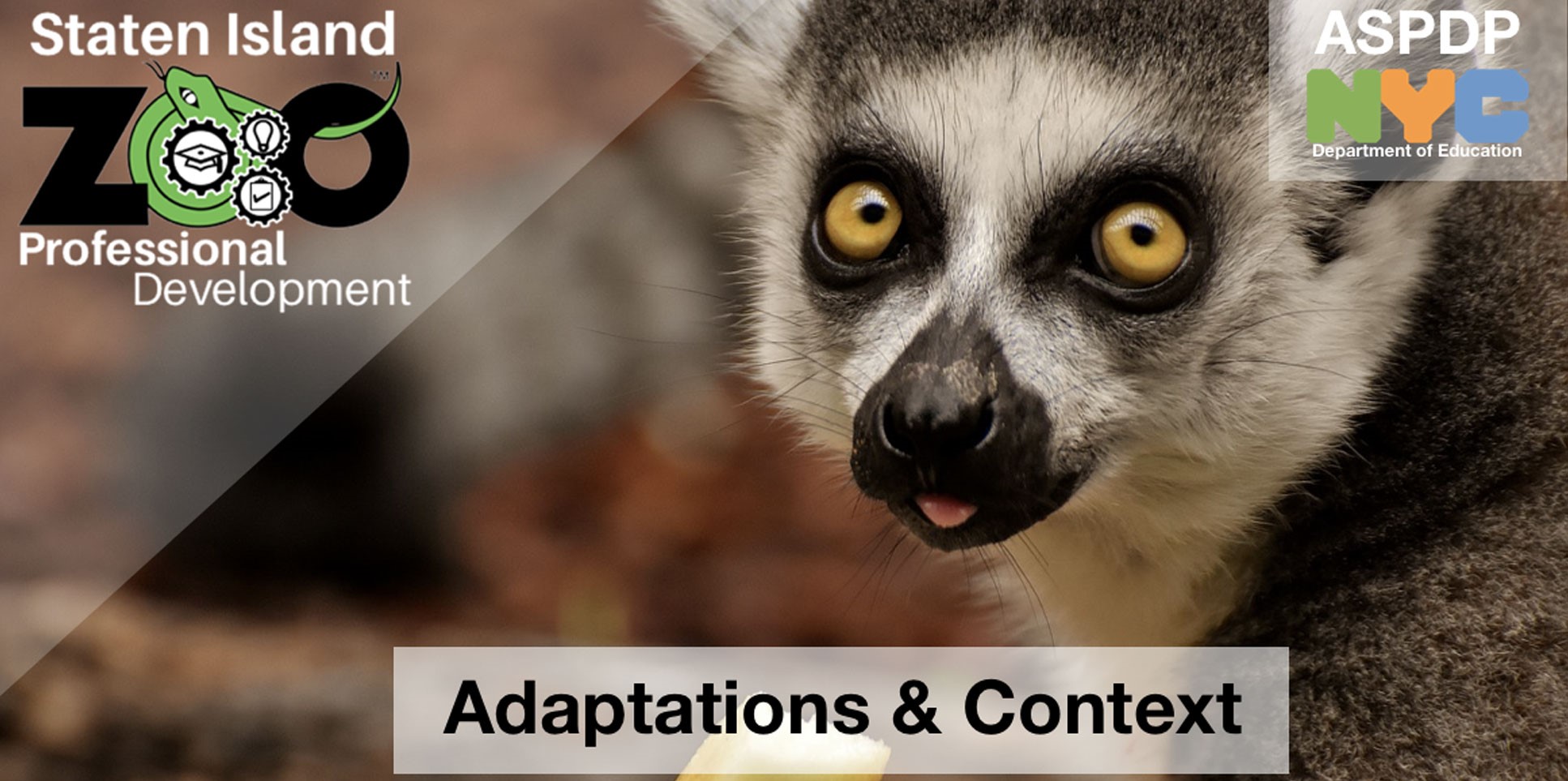
Adaptation is traditionally taught under the banner that an organism is perfectly adapted to its status quo conditions. While true on an existential level, idioms like this lend themselves to common misconceptions about abiotic and biotic factors that drive those adaptations. In this 2-day professional development course, participants will deep dive into context as it relates to a biological organism. Through targeted observation and secondary research, participants will be able to 1.) identify the abiotic, biotic, and contextual factors of a given environment. 2.) Formulate a taxonomy of common contextual factors that drive adaptation, biosphere-wide. 3.) Predict functional and behavioral adaptations expected to be observed throughout and across Earth’s biomes and biological taxonomies. 4.) Better understand adaptation. 5.) Explore and apply teaching strategies that help students understand habitats, niches, ecosystem dynamics, and the importance of context to biology at-large. 6.) Learn to utilize the Zoo’s culturally-rich and biodiverse exhibits as a study site for investigations.
At the first session, participants will be introduced to context by engaging in a probe game to identify contextual factors of a given habitat card. Participants will then work in groups to further identify those factors by using digital resources / research database queries to perform a literary review of the abiotic and biotic factors of their given habitat. Through a series of group activities, exploring a climate change and owl case study, and creative outlet tools, participants will be able to predict habitats solely based on its contextual factors. Facilitator will then guide participants through a Zoo exploration tour, while participants make observations about animal adaptations.
Participants will choose an animal to further explore and begin writing an animal brief on that utilizes secondary research and direct observation.
At session two, participants will present their observed animal briefs to the larger group. In smaller breakout groups, participants will develop a taxonomy of common contextual factors driving adaptation. Facilitator will then present live animals that participants will be able to actively engage with as a means of driving the observation of context and adaptation. Habitat cards will be redistributed, and participants, will “engineer” an organism that’s adapted to the contextual factors of that given habitat card. At the end of session 2, teachers will have time to reflect on practice and discuss implementation strategies using the NRSF protocol “Back to the Future” to ascertain classroom entry points with current students.
Session One: Sunday, July 25, 8:00AM - 4:00PM
Session Two: Saturday, August 28, 8:00AM - 4:00PM
Instructors: David Zaitz & Pearl Cales
Eligible for 15 CTLE hours and 1 P-Credit
In order to receive P-Credits, you must also register with ASPDP. There is an additional $45 fee from ASPDP for this course.
Click here to register with ASPDP.
Click here to view course syllabus.